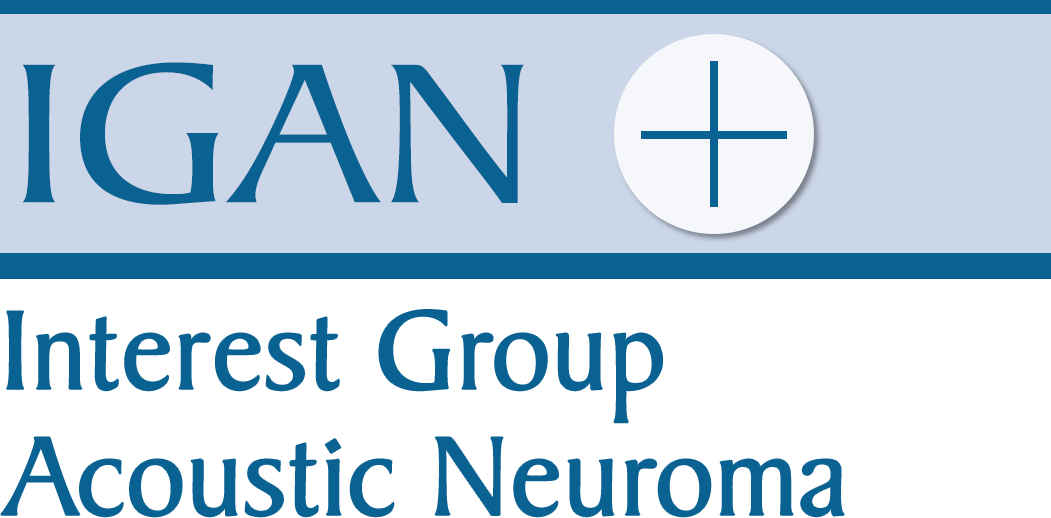Radiation of the acoustic neuroma with the Gamma Knife (radiosurgery)
The Gamma Knife, developed in 1968, is a radiation therapy device that has become a fully effective radiation apparatus today thanks to many technical further developments and especially through combining with modern computers. To date approx half a million people have received radiation via the GammaKnife worldwide (up to the year 2000 approx. 20,000 acoustic neuromas).
Active principle and technology of the Gamma Knife
The GammaKnife works with natural Gamma radiation from 201 small cobalt 60 radiation sources. Movable parts in the area of the sources are knowingly avoided. In a large radiation block a radiation management system from 201 radiation canals is shaped with high precision. The image guidance system consists of a front collimator in the source container and a second collimator on the patient's chair. Lastly, it forms a helmet. During the boring the rays are paralysed (collimised) and consolidated.


With help from a filter system, a fine ray is formed from the 201 sources, which overlap with all the other rays into one focus point. This way each individual ray contributes 0.5% to the total dose, which is important to eliminate the epicentre of the disease. Individual radiation gaps can be closed through the filter so that certain tissue structures can be removed by the radiation.
The needle-formed rays meet each other within a tenth of a millimetre accuracy in a star shape at a previously calculated point in the acoustic neuroma.
Due to the long half-life of cobalt the doses must only be calibrated every two years.
Gamma Knife treatment course
The radiosurgical treatment with a Gamma Knife is an outpatient treatment, generally carried out in one sitting.
During the first step in the treatment a stereotactic frame is attached to the patient's head by four small spikes. This occurs under local anaesthetic. The frame serves as a reference for the exact location of the disease epicentre with the help of imaging procedures. This is essential to ensure the highly local precision on the head.


The position and form of the acoustic neuroma and the details of the bony structures are determined by MRT and CT images and DSA (Digital Subtraction Angiography) immediately before the start of treatment in order to have up-to-date data. All data is compressed by processing software on the computer into a three-dimensional patient model and a radiation plan.
The localisation in the images, in other words the calculation of the spatial coordinates, occurs with help from the markings on the stereotactic frame.
During the radiotherapy the patient lies on the bed, the so-called helmet is fastened onto the head and connected to a hemispherical collimator. The bed is moved in such a way in the radiation device that the boring in the front collimator of the source container coincides with the boring in the collimator in the patient's bed. After opening the source container and the filtering before the sinking the calculated radiation via the 201 collimator borings can meet in the determined target area in the patient's head, in the acoustic neuroma. At the same time a previously determined point, more precisely a small, sphere-like volume is radiated for a set time. In further courses one small sphere volume after another is radiated, overlapping, in a so-called raster scan, until the whole acoustic neuroma is treated in its individual form. This usually happens up to 15 times, in other words 15 times the bed is moved inside the device, the central radiation point is readjusted and the bed is moved into the device once more.

Radiation is completely painless, silent and last from one to two hours. The patients are observed through four cameras and can be constantly in contact with the treatment team via an intercom device. On request, the patient can listen to music during the procedure. The treatment can be interrupted at any time for a break.
After the treatment, the stereotactic frame is immediately removed and the fastening points are cared for with a plaster. Normally, the patient's hair can be washed the after two days and the fastening points generally heal without scarring.
Aftercare
The tumour, which is not removed, but is "only" inactivated, must remain under observation after radiotherapy. Moreover, it needs to be determined whether and which side effects have developed. From the new MRT images, the tumour volume is accurately measured. Due to the slow shrinking time of benign tumours, such as acoustic neuromas, monitoring intervals of a few weeks at the beginning up to one year are scheduled. This is a lifelong requirement.
Along with MRT images, a neurological examination always takes place.
